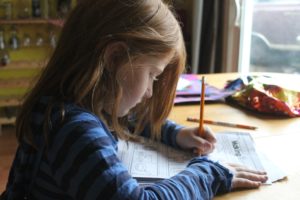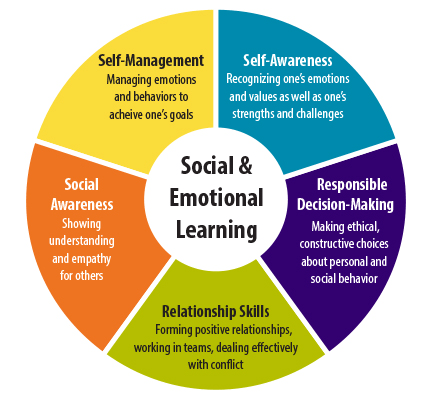
Addressing The Problem with Homework
Many educators are starting to recognize the problem with homework. And while homework is almost universal, there is little evidence that it actually works.

When I began grouping my students by ability, I encountered many of the standard objections. “Won’t the struggling learners get embarrassed?” “Won’t they fall farther behind?” As is typical when it come to the classroom, the answer depends on whether it’s done right. The key is to use flexible groupings, and to ensure you are differentiating properly for each group.
Most of the concerns were raised by parents. Or by administrators concerned about what parents would say. But when parents saw how much their children were learning, their stances softened. Besides, children who believed they weren’t “math people” began to gain confidence and enjoy learning. It’s hard to argue with results.
But the results of ability grouping aren’t always so positive. The issues of equity raised by ability grouping have been debated up to the Supreme Court. A study by Bonnie Grossen (executive director of the Center for Applied Research in Education) explores the social and legal history of ability groupings. She argues that courts have supported ability grouping only under certain conditions. Cases such as Hobson v Hanson specify that grouping must show demonstrable benefit for all students.
Flexible groupings are a key component to proving that benefit. In other words, having the ‘low’ students keep to their own all day and in every class is a big no-no.
In order for grouping to be effective (and legal), students must be able to change groups over time. After all, the goal is to provide better targeted instruction. If the targeting helps students, at least some should advance more quickly. These students should move to a more challenging group. If this never happens, the grouping is not doing its job.
‘Tracking’ describes separating students into separate classes, based on ability. Tracked students also tend to stay within their track (honors, remedial, etc) throughout their education.
But if we’re talking about flexible groupings within a classroom, the fuss is overblown. Some education leaders (including many that I respect) are concerned that leveled groupings can shame students or otherwise inhibit their progress. It’s true that some students may have initial discomfort. But the goal is not to create a permanent underclass of students. It’s so we can better meet their needs.
When I go shopping for jeans, I look longingly at the 33 inch waist section. I haven’t been able to wedge myself into one of those for years, but I just don’t like the idea of being a 35 or 36. Buying those 33 inch jeans might make me feel better momentarily, but having to wear them day-in and day-out wouldn’t just be painful. It might even cause lasting damage.
When we avoid addressing students’ legitimate learning needs, it’s equivalent to giving every child the same size uniform. If I’m in 3rd grade and reading on a 6th grade level, forcing me to read 3rd grade books is insulting. It also won’t support my growth as a reader. If I’m in 7th grade, but proficient in math up through 3rd, asking me to find negative fractional slopes is similarly torturous.
It comes down to which is the lesser evil. Grouping students, even if it means they are aware that some students are more or less advanced than they are? Or ignoring their individual needs and leaving them to struggle?
The art of flexible groupings involves meeting student needs without making them feel inadequate. Teachers should explicitly teach students about growth mindset, so they know why they are being grouped. It’s not about labelling. It’s about helping.
We should also be subtle in how we group students. Yes, the group that is farthest behind will usually figure it out. But it still helps to mix up the numbers of groups (such as group 3 highest, 2 lowest, 1 and 4 middle). Or use names instead of letters and numbers.
It’s also important to ensure that students are not always grouped by ability. Many activities work better in mixed groups. I tend to use leveled groups for problem-based learning and mixed groups for project-based learning.
Personalized learning creates opportunities for students to learn at the level that is right for them. And collaborative personalized learning makes the student experience more engaging and impactful.
It may seem paradoxical for students to work at their own pace and meet content standards. But students can learn more efficiently when work is targeted at their level. Even students moving at a slower pace will cover more content than they would with a one-size-fits-all approach. Of course, simply having students sit in circles is not enough. The success of a small-group class depends on intentional groupings and best practices for facilitating group work.
In her article, Ability Grouping is not Just Tracking Anymore, Carol L. Tieso examines several grouping strategies. She emphasizes that the strategy employed is the main determining factor of effectiveness. When ability-based flexible groupings are implemented with the right curricular adjustment, “significant achievement gains can be realized.”
One way to adapt a traditional classroom for flexible groupings is for the teacher to rotate from group to group. You can give the same type of lecture you would give to a full class, but target it to the smaller group. You can differentiate the pace of the lecture, or you could give the same lecture at different times. While you work with one group, others can complete independent activities.
Inquiry-Based Learning can make the process even more engaging and impactful. The idea is that students can figure out much of what we are accustomed to ‘teaching’ them. When they do so, their brains are more actively engaged. They develop a deeper understanding of the underlying concepts and retain what they’ve learned.
When you teach a child something you take away forever his chance of discovering it for himself. – Jean Piaget
A lesson plan based on the 3-part workshop model provides a structure for educators interested in this approach.
When grouping students by ability, it is essential to give them leveled work. Otherwise, why group by ability? Giving students activities matched to their level is intentional and supportive. Otherwise, we are simply granting status to high achievers and shaming the rest.
In math, you could add or remove steps from a word problem, or modify the complexity of numbers involved. In humanities, assign different reading assignments on a similar topic. Or alter the number of questions in an activity.
Whether you are using leveled grouping (homogenous) or mixed grouping (heterogenous),what’s most important is that your grouping decisions are intentional. Decide why you are conducting a small group lesson, and ensure that your grouping decisions support that purpose.
Data from an online platform, such as Khan Academy or NoRedInk, can help you decide who belongs in which group, and what content to assign. This system works best with skills progression of skills, as in math or grammar, since students will be at different stages of mastery.
You can also used leveled groups to have students read at different levels. Tools like Newsela (current events) and LightSail (fiction and nonfiction) match reading assignments to each student’s level. You can also have students select their own materials. I have students use a Story Analysis Graphic Organizer while analyzing short stories in groups.
When I began using flexible groupings, I realized that some students worked better in groups than others. Social-Emotional readiness is a key element of success with group process.

Part of the beauty of flexible groupings is that working in groups helps students develop social-emotional skills. Students come to understand their own learning process (metacognition) at the same time they are learning content. When my students work in small groups, I cycle from table to table. I generally try to avoid giving them answers, but scaffold their group process by asking questions.
It does take time to explicitly teach these skills. But once they get the hang of it, students learn new material much more quickly. Not to mention the social-emotional benefits they develop through consistent and purposeful communication with their peers.
When students work in flexible groupings, it’s important to reinforce expectations for constructive dialog. Review best practices at the start of each lesson, and have students reflect and share at the end. Using a group work rubric can clarify expectations and make it easier to provide feedback.
Giving students the opportunity to work in flexible groupings can increase both student achievement and engagement. To learn more about flexible grouping, find tips and ask questions in our Facebook group.
You can get more stories and strategies in the Room to Discover Educator’s Newsletter. Each week, we share posts like this one with educators around the world. Our community is dedicated to bringing creativity, collaboration, and conceptual learning to every student, in every classroom.

Many educators are starting to recognize the problem with homework. And while homework is almost universal, there is little evidence that it actually works.

Does the Danielson Rubric improve teaching? Maybe it’s an unfair question. After all, it’s a rubric, not a training program. But…

Effective curriculum plans are built by engaging teachers in a collaborative, school-based process. Getting a head start before summer break is key.